The Center for Nanotechnology and Agricultural Pathogens Suppression (CeNAPS)
BACKGROUND
This Center of Excellence is the product of a USDA AFRI Foundational Program Grant Award 2016-67021-2498 in the Agriculture Systems and Technology Program Area; specifically: Program Area Priority Code A1511 “Nanotechnology for Agricultural and Food Systems.” The grant title is “Nanoscale elements suppress plant disease, enhance micronutrient use efficiency, and increase crop yield.” The project dates are March 1, 2016-February 28, 2019.
Conceptual representation of micronutrients as a “one-stop shop” for enhancing crop productivity. This illustration is based on studies of crop performance indicators (biomass/yield, disease suppression, nutrient fortification) evoked by NPs.

CENTER INVESTIGATORS
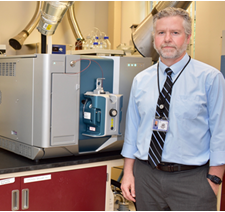
Jason C. White, Ph.D.
Director
The Connecticut Agricultural Experiment Station
123 Huntington Street
New Haven, CT 06511
203-974-8523
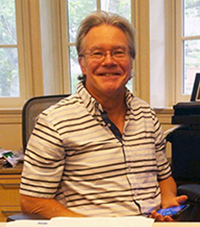
Wade Elmer, Ph.D.
Department of Plant Pathology and Ecology
The Connecticut Agricultural Experiment Station
123 Huntington Street
New Haven, CT 06511
Voice: (203) 974-8503 | Fax: (203) 974-8502
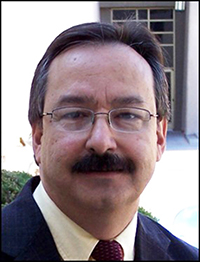
Jorge Gardea-Torresdey, Ph.D.
Dudley Professor of Chemistry and Environmental Science & Engineering
Chair, Department of Chemistry
The University of Texas at El Paso
El Paso, TX 79968
Phone: 915-747-5359 | Fax: 915-747-5748

Christian Dimkpa, Ph.D.
Scientist - Plant Physiologist-Soil Biologist
International Fertilizer Development Center (IFDC)
P.O. Box 2040 Muscle Shoals,
Alabama, 35661
United States
Phone: +1-256-381-6600 ext. 277 | Fax: +1-256-381-7408
OTHER TEAM MEMEBERS
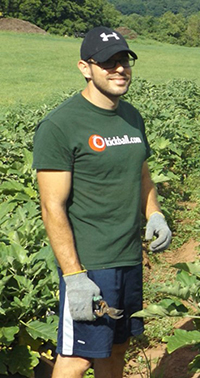
Dr.
Roberto De La Torre-Roche
The Connecticut Agricultural Experiment Station
Post-doctoral Research Associate
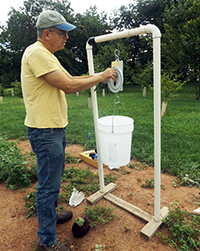
Mr. Peter Thiel
The Connecticut Agricultural Experiment Station
Research Technician
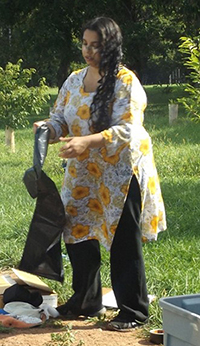
Ms. Sadia Younas
Southern Connecticut State University
Research Intern

Mr. Ishaq Adisa
University of Texas El Paso
Graduate Student
USDA GRANT: Project Summary
Nanoscale elements suppress plant disease, enhance micronutrient use efficiency, and increase crop yield
The primary goal
is to use nanoscale elements as a comprehensive agricultural amendment strategy
to suppress crop disease, improve nutritional content, and enhance overall
yield. Soil pathogens significantly limit agricultural
production, reducing crop yield by 10-20% and resulting in billions of dollars
in annual losses. Separately, pathogen
control efforts by fungicides exceed $600 million per year in the US. At the
same time, macronutrient utilization remains low due to environmental losses
and low availability. This shortfall in food production will worsen with a
changing climate and an increasing population. Nanotechnology can play a
critical role in maximizing global food production and achieving food security.
Current approaches have focused on nano-enabled conventional agrichemicals,
nanosensors, and waste treatment strategies. However, little is known about the
effects of nanoparticle (NP) elements on disease suppression, macronutrient
uptake, and crop growth. For example, plant micronutrients are pivotal in
disease resistance through activation of defense barrier production and by
affecting the systemic acquired resistance pathway. Unfortunately, element availability in soil
is limited and foliarly applied micronutrients are not significantly
translocated to roots. Although NP intra
plant translocation has been reported, there is no information on whether
enhanced translocation of NP elements can deter root or shoot pathogens. Based
on preliminary data and a recent review of the literature, our central
hypothesis is that NP elements can be used to strategically suppress disease,
improve nutritional status and enhance crop growth and yield. Our
four objectives are:
Obj.1- Demonstrate NP efficacy upon foliar or root application at suppressing fungal pathogen infection in model vegetable and grain species.
Obj.2- Determine the role of soil type and NP source in disease suppression and crop yield.
Obj.3- Determine the impact of NP element treatment on macronutrient (NPK) utilization.
Obj.4- Characterize NP absorption and translocation mechanisms in plant tissues by scanning/ transmission electron microscopy (S/TEM-EDS).
Using greenhouse and field trials, we will grow tomato, eggplant, corn, and squash in pathogen (Fusarium, Verticillium, Sphaerotheca fuliginea) infested areas. Foliar or root applications of NP metal oxides (CuO, MnO, ZnO, CeO2) will be made at the transplant stage. Bulk and ion controls will be included. A broad range of NP application rates will be used to quantify the dose-response nature of disease suppression or of macronutrient uptake efficiency. Measured parameters include biomass/yield and disease severity; plant tissues will be analyzed for element/nutritional content using ICP-MS and S/TEM-EDS, which also enables an assessment of risk from any residual NPs.
Although NP use in agriculture is increasing, the stresses from a changing climate and increasing population require novel strategies for enhancing food production. The use of NP metal oxides to suppress disease and promote yield has great potential to maximize agricultural output. The multidisciplinary team of investigators will establish a Center of Excellence that deploys a unique combination of educational and dissemination strategies to engage a range of stakeholders.
Effect of nanoparticle elements on crop disease (Servin et al, 2015).

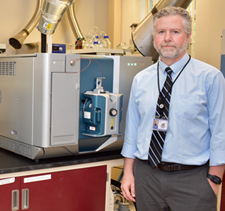
Jason C. White, Ph.D.: Department of Analytical Chemistry, The Connecticut Agricultural Experiment Station
Dr. Jason White's CAES biography page
Dr. White is the Project Director. He is also the Director at The Connecticut Agricultural Experiment Station and has been studying the interactions of chemicals and plants for 17 years. Dr. White received his Ph.D. in Environmental Toxicology from Cornell University in 1997. He is Immediate Past President of the International Phytotechnology Society, Managing Editor for the International Journal of Phytoremediation, and the Editorial Advisory Boards of Environmental Science &Technology and Environmental Science & Technology Letters. He is also on the Editorial Board of NanoImpact and Environmental Pollution. He supervises 3 Ph.D.-level Scientists, 5 Post-doctoral Research Associates, and 6 Research Technicians. Total competitive research funding exceeds $900,000/year. He has published 130 papers, with many focusing on the interactions between engineered nanomaterials and plant species, and has an H-index of 38.
Specifically, Dr. White serves as Project Director, overseeing all administrative activities of the USDA grant, including the Center of Excellence (CeNAPS). Dr. White also serves as quality assurance officer for the grant; his laboratory is currently pursuing ISO 17025 accreditation for a food safety testing program (both human and animal food) with the CT Department of Consumer Protection, the CT Department of Agriculture and the US FDA. From a technical perspective, Dr. White, along with CoPD Elmer, will directly oversee the research activities of the Post-doctoral Associate hired on the project, Dr. Roberto De La Torre-Roche. In addition, Dr. White has 3 other Post-doctoral Associates and one visiting Post-doctoral Fellow from the University of Parma; the collective expertise and select resources from that larger team are frequently leveraged in this project.

Wade Elmer, Ph.D.: Department of Plant Pathology and Ecology, The Connecticut Agricultural Experiment Station,
Dr. Wade Elmer's CAES biography page
Dr. Elmer received his Ph.D from Michigan State University in 1985 and began his career at The Connecticut Agricultural Experiment Station in 1987. Understanding the mechanisms of disease suppression through nutrition is a long term goal. My research is also designed to developing strategies to suppress root and foliar diseases using combinations of mineral nutrition, soil amendments (biochar), and earthworms. Recently has begun investigating the influence of metal oxide nanoparticles on plant health and root disease. Dr. Elmer has authored or co-authored over 90 peer-reviewed papers and written over 100 articles for trade magazines and symposia, and as fact sheets and bulletins.

Jorge Gardea-Torresdey, Ph.D.: Department of Chemistry, University of Texas El Paso (UTEP);
Dr. Jorge Gardea-Torresdey's biography page
Dr. Gardea-Torresdey is currently the Chair of the Department Chemistry at UTEP. He received his PhD from New Mexico State University in 1988. The research interests of Dr. Gardea include: applications of spectroscopy techniques in environmental chemistry; phytoremediation, novel methods for the bioproduction of nanoparticles, development of analytical methods to detect nanomaterials, study of the fate of nanoparticles in the environment, and applications of nanotechnology to clean water among others. His current research is funded by the US NIH, DOE, EPA, USDA, and the NSF. He is a co-investigator in the NSF/EPA funded “Center for Environmental Implications of Nanotechnology” (UC CEIN). He is also a co-investigator in the recently funded NSF Engineering Research Center "Nanotechnology Enabled Water Treatment Systems" (NEWT). He has authored over 400 publications and issued 5 US patents for environmental remediation. Dr. Gardea has graduated 32 PhD. Students (26 in Environmental Science and Engineering and 6 in Chemistry), and 28 students have received their M.Sc. degrees under his mentorship. Also he has mentored more than 35 undergraduate students in research. The scientific contributions of Dr. Gardea have allowed him to receive many honors throughout his professional life. Recently, he received the 2015 distinguished alumni award from the New Mexico State University. His research achievements are highlighted in the Lawrence Hall of Science of the University of California Berkeley. He received the 2009 SACNAS Distinguished Scientist of the Year Award and he was awarded the 2012 Piper Professor Award, which is the most prestigious honor conferred to a Professor in the State of Texas. Dr. Gardea’s career has been highlighted by the most important Journals in Science and Engineering, including the October 28, 2009 issue of Environmental Science & Technology (ES&T) and the December 3, 2009 Issue of Nature. He was Editor of the Journal of hazardous material from 2007 to 2010 and in January 1, 2011, he was appointed Associate Editor of ES&T, which is ranked # 1 in the world in the fields of Environmental Sciences and Environmental Engineering.

Christian Dimkpa, Ph.D.: International Fertilizer Development Center (IFDC), Virtual Fertilizer Research Center (VFRC); https://ifdc.org/; http://vfrc.org/
Dr. Christian Dimkpa's CAES biography page
Christian Dimkpa is a plant-soil scientist at the International Fertilizer Development Center (IFDC), Muscle Shoals, Alabama, USA. He is involved in research activities with IFDC collaborators working to develop novel fertilizers and fertilizer delivery strategies. He is currently conducting studies on the beneficial aspects of metallic nanoparticles as micronutrient fertilizers, as against being environmental toxicants. Prior to joining IFDC in March 2014, Christian was a Research Assistant Professor at the Biology Department of Utah State University Logan, Utah, USA, where, as a co-Principal Investigator on a United States Department of Agriculture-funded project, he investigated the interaction of plants and plant-associated microbes with metallic nanoparticles. In June 2009, he obtained his doctorate degree in Natural Sciences (plant-microbe-metal interactions) at the Friedrich Schiller University/International Max Planck Research School, Max Planck Institute for Chemical Ecology Jena, Germany. He has published over 40 journal articles and book chapters, most on the interaction of metallic nanoparticles with plants and/or plant-associated soil microbes. He has given scientific presentations in both national and international meetings and conferences.
THE CENTER FOR SUSTAINABLE NANOTECHNOLOGY
In September of 2017, J.C. White and W. Elmer were invited to join the Center for Sustainable Nanotechnology (https://susnano.wisc.edu/ ) as Senior Investigators. The goal of the Center for Sustainable Nanotechnology is to develop and utilize a molecular-level understanding of nanomaterial-biological interactions to enable development of sustainable, societally beneficial nanotechnologies. In effect, we aim to understand the molecular-level chemical and physical principles that govern how nanoparticles interact with living systems, in order to provide the scientific foundations that are needed to ensure that continued developments in nanotechnology can take place with the minimal environmental footprint and maximum benefit to society. The CSN is not a physical center but is instead a focal point for collaboration that links the complementary expertise of researchers at 13 different institutions to achieve what none of us could do individually. We co-advise graduate students and post-doctoral associates and meet frequently in cyber-space, taking advantage of the latest in web-enabled communications to achieve a high level of interaction. Funding for the CSN comes from the National Science Foundation Division of Chemistry through the Centers for Chemical Innovation Program. In September of 2017, the Center awarded J.C. White a seed grant (approximately $200,000 over two years) to pursue nano-enabled suppression of crop disease as a CSN objective. The focus will be on using novel advanced materials developed by the Center. This work will run in parallel with and enhance the current USDA project described in this Center of Excellence.
PUBLICATIONS
- White, J.C.; Dimkpa, C; Elmer, W.; Gardea-Torresdey, J. 2017. Year 1 Annual Report. [PDF]
- Spiegel, J. 2017. In Connecticut, a Nanoscale Agricultural Experiment With Global Potential. UnDark August 30, 2017. [PDF]
- Elmer, W. 2017. Improving plant disease resistance: Can nanoparticles deliver? Scientia. [PDF]
- Dimkpa, C; White, J.C.; Elmer, W.; Gardea-Torresdey, J. 2017. Nanoparticle and ionic Zn promote nutrient loading of sorghum grain under low NPK fertilization. J. Agric. Food Chem. 65, 8552–8559. [PDF]
- Dimkpa C., Bindraban P. 2017. Nanofertilizers:new products for the industry? 2017. J. Agric. Food Chem. DOI: 10.1021/acs.jafc.7b02150. [PDF]
- Elmer, W.; White, J.C. 2016. The use of metallic oxide nanoparticles to enhance growth of tomatoes and eggplants in disease infested soil or soilless medium. ES: Nano. DOI: 10.1039/C6EN00146G. [PDF]
- Servin, A.D.; White, J.C. 2016. Nanotechnology and agriculture: Next steps for understanding the balance between applications and implications. NanoImpact, 1, 9-12. [PDF]
- Servin, A.; Elmer, W.; Mukherjee, A.; De la Torre-Roche, R.; Hamdi, H.; White, J.C.; Bindraban, P.; Dimkpa, C. 2015. A review of the use of engineered nanomaterials to suppress plant disease and enhance crop yield. J. Nano. Res. DOI:10.1007/s11051-015-2907-7 [PDF]
- Servin, A.; Elmer, W.; Mukherjee, A.; De la Torre-Roche, R.; Hamdi, H.; White, J.C.; Dimkpa, C. 2015. Nanoscale Micronutrients Suppress Disease. VFRC Report 2015/x. Virtual Fertilizer Research Center, Washington, D.C. [PDF]
IN THE NEWS
December 26, 2016--Connecticut scientists studying nanoparticles to help grow disease-resistant food http://www.nhregister.com/health/20161226/connecticut-scientists-studying-nanoparticles-to-help-grow-disease-resistant-food
http://www.ozy.com/fast-forward/could-nanotechnology-end-hunger/70771
PRESENTATIONS AND POSTERS
- USDA NIFA AFRI 2016-67021-24985 "Nanoscale Elements Suppress Plant Disease, Enhance
Micronutrient Use Efficiency, and Increase Crop Yield" [PDF]
-
252nd
American Chemical Society (ACS) National Meeting
Philadelphia, PA; August 21-25, 2016
“Nanoscale nutrients suppress plant disease and increase crop yield”
[PDF]
- 2016
International Association for Food Protection (IAFP) Annual Meeting
St. Louis, MO; July 31-August 2, 2016
Engineered nanoparticles in food: Implications for food safety and consumer health
[PDF]
- 2016 American Phytopathological Society (APS)
annual meeting
Tampa, FL; July 30-August 3, 2016
“Metal oxide nanoparticles for management of Verticillium wilt of eggplant and Fusarium wilt of watermelon”
[PDF]
- USDA
Nanotechnology Grantees Annual Meeting
Pennsylvania State University, University Park, PA; June 6-7, 2016
“Nanoscale elements suppress plant disease, enhance macronutrient use, efficiency, and increase crop yield”
[PDF]
- 2016
Gordon Research Conference; Environmental Sciences: Water
Holderness, NH; June 26-July 1, 2016
“Nanomaterials and the food supply: Assessing the balance between applications and implications”
[PDF]
- 2015
Sustainable Nanotechnology Organization annual meeting
Portland, OR; November 7-10, 2015
“Nanoparticles of copper oxides improve growth of eggplant in disease infested soils”
[PDF]
Other Nanotechnology-Related Sites of Interest
National Nanotechnology Initiative: http://www.nano.gov/
University of California Center for Environmental Implications of Nanotechnology (UC CEIN): http://www.cein.ucla.edu/new/
Duke University Center for the Environmental Implications of Nanotechnology (CEINT): http://ceint.duke.edu/
Project on Emerging Nanotechnologies: http://www.nanotechproject.org/
Sustainable Nanotechnology Organization (SNO): http://www.susnano.org/
National Institute of Standards and Technology (NIST) Nanotechnology Portal: http://www.nist.gov/nanotechnology-portal.cfm
Sustainable Nanotechnologies Project: http://www.sun-fp7.eu/
US Department of Agriculture, National Institute of Food and Agriculture: https://nifa.usda.gov/topic/nanotechnology
Nanosystems Engineering Research Center for Nanotechnology-Enabled Water Treatment: http://www.newtcenter.org/
National Institute of Health (NIH): https://www.nih.gov/research-training/nanotechnology-nih
US Food and Drug Administration (FDA): http://www.fda.gov/ScienceResearch/SpecialTopics/Nanotechnology/default.htm
US Environmental Protection Agency (EPA): https://www.epa.gov/chemical-research/research-nanomaterials
Arizona State University, Center for Nanotechnology in Society: http://cns.asu.edu/
Center for Food Safety: http://www.centerforfoodsafety.org/issues/682/nanotechnology#

